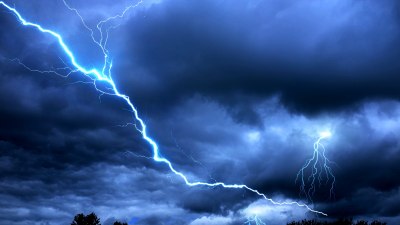Why Lightning Looks Beautiful But Feels Terrifying
Explore the stunning beauty of lightning while understanding the fear it invokes in us.

Lightning is one of nature's most awe-inspiring phenomena, transforming the sky into a canvas of electric light. This spectacular display can evoke feelings of wonder and amazement, yet simultaneously instill a deep sense of fear. In this article, we will explore the contrast between the stunning beauty of lightning and the terror it can inspire, delving into the science behind this natural spectacle, its historical significance, and psychological perspectives on why lightning is both beautiful and frightening.
The Science of Lightning
Lightning is a powerful electrical discharge that occurs during thunderstorms, resulting from the buildup of electric charge in clouds. When the voltage is high enough to overcome the electrical resistance of the air, a lightning bolt is formed. This process produces a bright flash of light, a sound known as thunder, and can reach temperatures hotter than the surface of the sun.
One of the most beautiful aspects of lightning is the variety of shapes and colors it can take. Lightning can appear as forked, sheet, or globular, with colors ranging from white to blue, purple to red. These variations are due to the temperature of the air, moisture content, and the presence of particles in the atmosphere. The intricate patterns of lightning forks, often branching in complex and unique ways, create a mesmerizing display against dark storm clouds.
The Beauty of Lightning
The visual appeal of lightning is undeniable. Many photographers and storm chasers are drawn to thunderstorms specifically to capture the beauty of lightning strikes. Images of lightning illuminating the night sky can evoke feelings of both tranquility and exhilaration. The stark contrast between the bright white flashes and the darkened surroundings creates dramatic visuals that are hard to resist.
Moreover, lightning serves as a reminder of nature's power and majesty. The sheer force of a lightning strike, capable of causing immense destruction, also contributes to its beauty. Watching a storm roll in, with flashes of lightning illuminating the clouds and the ground below, can evoke a sense of peace and connection to the Earth’s natural rhythms.
The Terror of Lightning
The fear of lightning, known as asthenophobia, is not uncommon. This fear can stem from a lack of understanding about the phenomenon and the associated risks. Severe thunderstorms can produce dangerous weather conditions, including flash flooding and hail, contributing to the sense of fear surrounding lightning. The powerful and sudden nature of lightning strikes can create a primal sense of vulnerability, leading individuals to react with fear and trepidation.
Historical Perspectives on Lightning
In many cultures, lightning was seen as a manifestation of nature's rage or a sign of impending doom and destruction. This historical context has contributed to the contemporary understanding of lightning as an entity to be revered and feared. Religious texts often refer to lightning as a symbol of divine wrath, further enforcing the juxtaposition of beauty and terror.
Safety Precautions During Lightning Storms
- Seek shelter indoors, avoiding open fields or isolated trees.
- Stay away from electrical appliances and plumbing; lightning can cause surges and injuries.
- Do not use your mobile phone during a storm; find a safe location instead.
- If you're caught outside with no shelter, crouch low to the ground, minimizing your profile.
- Wait 30 minutes after the last thunder before leaving your shelter.
Being prepared can help alleviate fear and ensure safety during storm events. Implementing these precautions can empower individuals to face thunderstorms with greater confidence, allowing them to appreciate the beauty of lightning while minimizing the associated risks.











